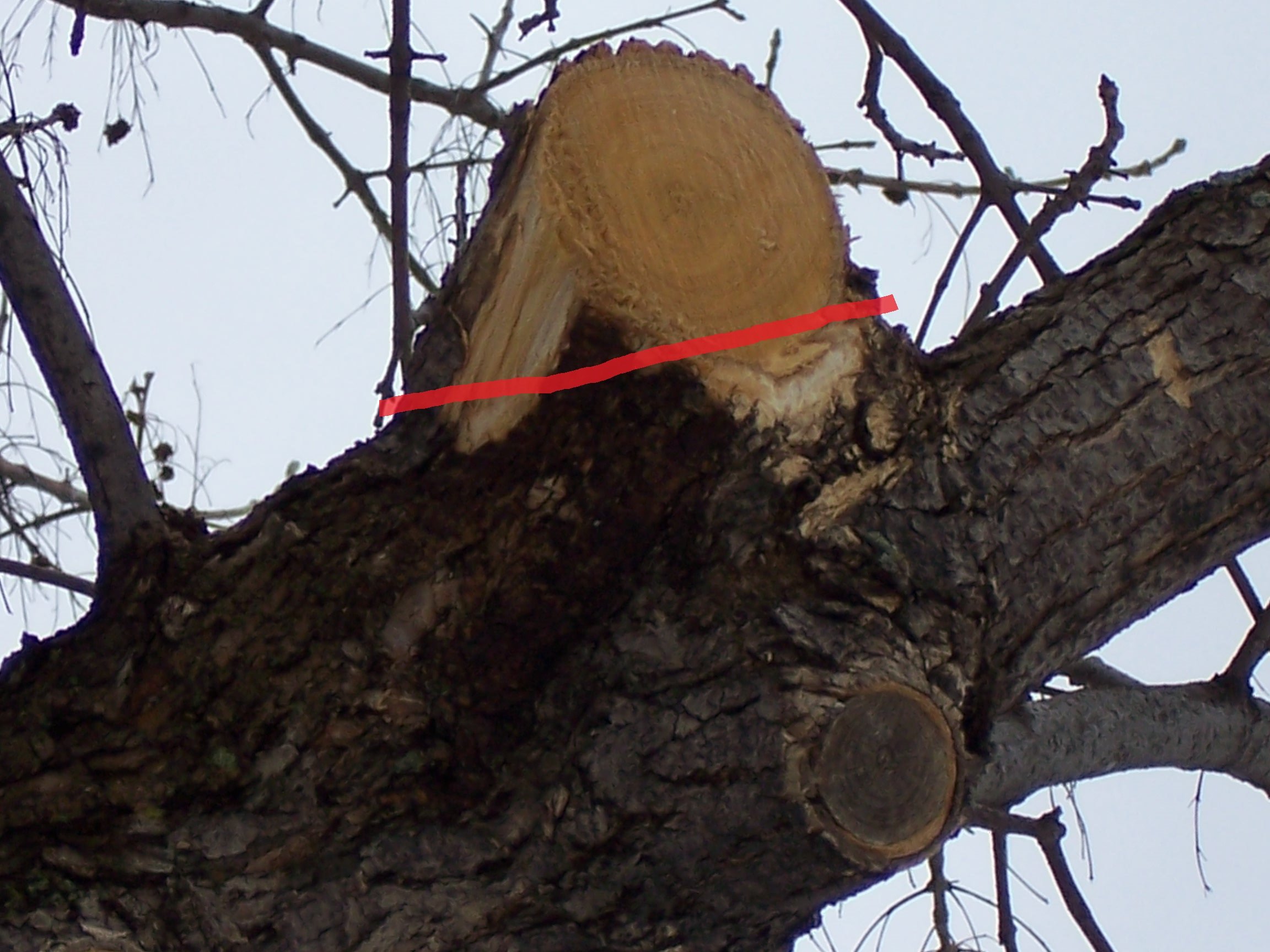Tree Pruning House of Horrors
Pruning is the most common tree maintenance practice. In urban landscapes, tree pruning is needed to improve overall structure, to enhance vitality and to maintain safety and aesthetics. To optimize the health and structure through pruning, there must be an understanding of tree biology. Pruning cuts must be made with an understanding of how the tree will respond. Improper pruning is harmful and can cause damage that will remain with a tree for the remainder of its life. Below is a list of improper pruning commonly seen in landscapes.
#1 Tear Cut
A tear cut is most commonly done trying to prune off the limb in one move. The weight of the limb eventually “tears” off the lower portion of the branch collar exposes the wound. Utilizing the 3-cut pruning method should never result in this type of lazy cut.
#2 Flush Cut
Trees contain the chemicals needed to “seal off” a pruning cut or wound of any type. The chemical zone is found within the branch collar, a swollen area around the base of the limb. A flush cut (pruning past the branch collar) essentially removes those chemicals and lessens the ability of the tree to property seal off the pruning cut.
#3 Stub Cut
Essentially the exact opposite of a flush cut, a stub cut leaves too much of the branch remaining past the branch collar. The tree will have a far greater time trying to seal off this pruning cut, than if the cut was made just outside the branch collar. This is an open door for bacteria and fungi.
The red line indicates where the proper cut should have been made.
#4 The Kitchen Sink
Equipment can make our lives easier, but an extended chainsaw creates poor cuts and lazy technique. The picture of the maple tree below illustrates this well. Holding an extended chainsaw and standing in one place creates flush cuts, stub cuts, skinned bark, cuts and wrong angles and all kinds of horror.
#5 Wrong Angle
Some improper cuts are made because the pruner is standing or is placed in the wrong position, and the result creates a cut like the one pictured below. The cut was not made just outside the branch collar, plus it was at the wrong angle. This essentially results in a “sideways stub”.
The two pictures below show the different between good and poor closure of a pruning cut. The top picture shows the callus tissue completely sealing over the wound in a nice pattern. The bottom picture (because of a poor cut), shows erratic wound closure. This is a good reminder that a cut remains with a tree for the entirety of its life. A good pruning cut does “damage” but will give the tree its best chance to compartmentalize the wound.









